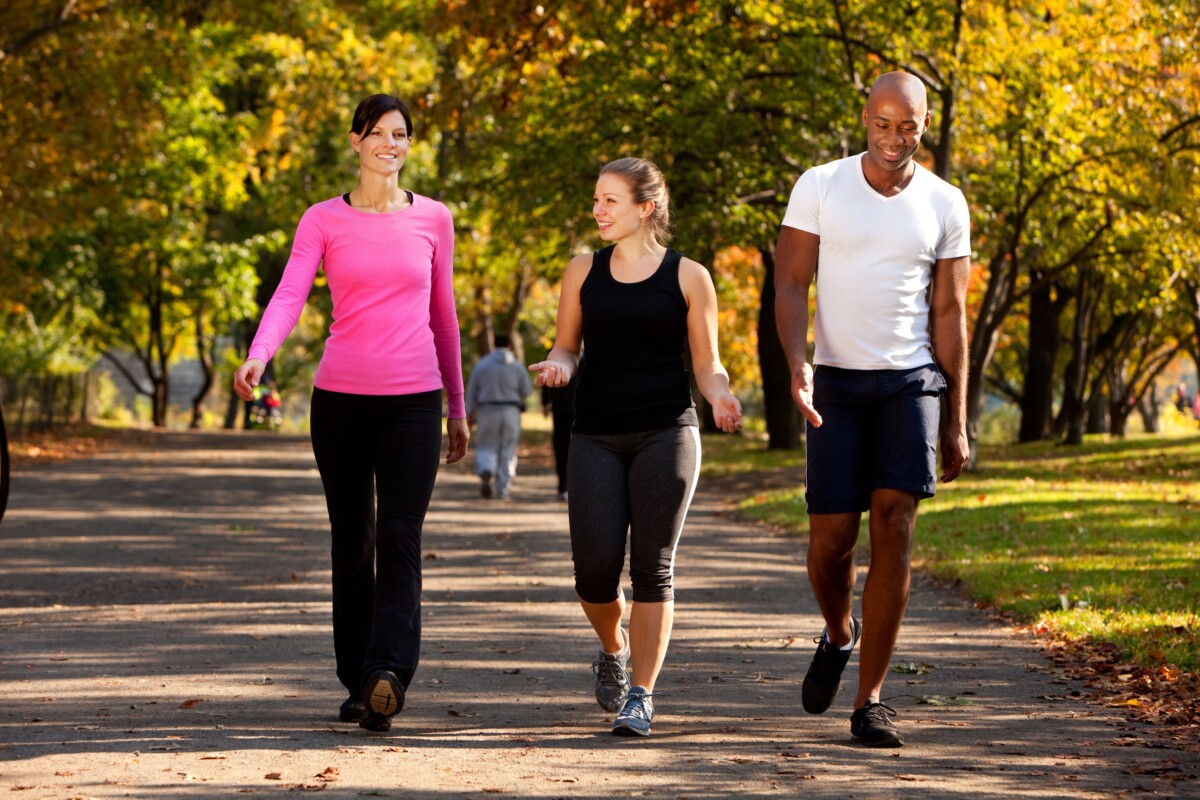Walking: The Easy Path to Fitness

Walking for fitness is easy because it’s such a natural form of movement. The simple act of putting one foot in front of the other can strengthen us to do the things we love. It can also help protect us from disease and premature death.
Walking is Natural
The simpler something is, the easier it is to underestimate. This is the case with walking. There’s no cutting-edge equipment to advertise, so it doesn’t get the publicity of a Peleton. It’s not a competitive sport, so it doesn’t show up on Olympic television. The main requirements for walking are a minimal level of fitness and the willingness to stick to it.
If you’re thinking about walking for fitness, consider the following:
- It’s free.
- Almost anyone can do it.
- The only equipment you need is your own two feet and a pair of comfortable shoes.
- It’s relaxing.
- You can do it almost anywhere.
- No training is required.
How Much Walking is Enough?
Fortunately, walking doesn’t have to be the latest fad to be effective. It does, however, need to involve more than shuffling around the house. If you want to get the maximum benefit from walking, walk…..
- At least 30 minutes at a time.
- Every day.
- At a brisk pace of about 3 miles an hour or 100 steps a minute.
Why Walking Improves Fitness
When it comes to your health, the old adage “If you don’t use it, you lose it” applies. When you walk often, quickly and for a significant period of time, you use a lot of bodily systems. This includes multiple large muscle groups, your heart, blood vessels, lungs and sense of balance. You also put stress on your bones.
As you use each of these systems, you help make them stronger. This helps you feel better and move more easily. It also causes your risk of disease and injury to go down. In particular, your risk for heart disease, diabetes, high blood pressure and osteoporosis decreases.
Walking and living a longer, healthier life
Since walking helps prevent heart disease, diabetes, etc., the apparent connection between walking and a longer lifespan should come as no surprise. In fact, this has become a fascinating subject of research for scientists trying to help people live longer and healthier lives. Among other things, researchers have looked at the effects that walking speed and distance walked have on length of life.
In a research study reported in the Mayo Clinic Proceedings (Comparative Relevance of Physical Fitness and Adiposity on Life Expectancy – Mayo Clinic Proceedings ) researchers compared the health benefits of walking slowly with the benefits of walking more quickly. According to results, brisk walkers lived an average of about a year longer than slow walkers.
More recently, research reported in the Journal of the American Medical Association in September 2021 (Steps per Day and All-Cause Mortality in Middle-aged Adults in the Coronary Artery Risk Development in Young Adults Study | Lifestyle Behaviors | JAMA Network Open | JAMA Network) looked at the impact of walking distance on the risk of dying. According to results, middle-aged walkers who averaged at least 7000 steps a day had a 50 to 70% lower chance of dying than those who averaged less than 7000 steps a day.
Getting Started
There are two ways to approach walking for fitness. The most common approach is to add walking to your schedule as if it were any other planned activity. This means setting aside time, picking your route and deciding how many days a week to walk. If you don’t already have an exercise routine, this can take quite a bit of discipline. The advantage of this approach is that you can choose anywhere to walk, even indoors. (How to Choose a Treadmill | Rush Memorial Hospital is helpful if you’re thinking about investing in a treadmill. )
The second method of walking for fitness is walking for transportation. To get started, pick a few nearby places that you routinely visit: the pharmacy, the beauty salon or even your work. Decide that, whenever you to go to these places, you’re going to walk instead of driving. You may need to leave earlier, but other than that, there is nothing else to plan. Your route is built in. Your time is built in. By using walking for transportation, exercise will become a natural part of almost every day.
In Conclusion
If you decide to take up walking for fitness, your consistency may impress people but the activity itself probably won’t. Fortunately, the yardstick of fitness activity isn’t how many people you impress. It’s how you feel and whether or not you’re able to do the things you love. By these standards, walking for fitness measures up just fine.
